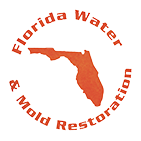5 Things That Determine Water Damage Restoration Cost in South Florida
Water damage might cause secondary difficulties for your house and property. HVAC leaks, plumbing spills, blocked gutters, and broken appliances are common causes. Water damage in South Florida, FL, needs immediate repair. Water damage may submerge your home for days. Water damage left ignored can cause mildew and wall damage. Water damage restoration costs will also vary.
Several Factors Influence the Cost of Repairing Water Damage
Water damage on the surface might be deceiving since water can infiltrate your property. Water damage restoration services solve urgent difficulties and prevent future problems. Water’s nature makes damage costs variable. Let’s examine water damage restoration cost variables.
1. Area Affected by the Crisis
The more extensive the damage, the more time and money it will take to fix. Before repair work, a larger space would require more dehumidification. Additionally, more significant damage would necessitate the replacement of a greater number of materials. A complete floor or room needs more workers to be repaired than a few square feet of damage. In addition to these characteristics, a smaller region may be more susceptible to harm than a bigger one.
2. A Water Type
Water quality can range from potable to toxic. Higher water damage repair expenses might be attributed to more extraordinary precautions and treatments for more contaminated water. Depending on the amount of danger, there are three types of water. Among them:
Category 1: You’ll find reasonably safe water for you and your pets to drink in this area. Sanitary sources, such as a leaky faucet, toilet tank, or water pipe, may be to blame. Snowmelt may also be to blame. A property can be damaged even when Category 1 flood water is not tainted.
Category 2: Used water, such as from washing machines or dishwater overflow, is involved in this. Even though it does not contain sewage, it still contains toxins. If left in its current state, Bacteria can be found in Category 2 water, which makes it Category 3 water.
Category 3: “Blackwater” refers to a mixture of toxic chemicals, microorganisms, and sewage. Sewage and even flooding are familiar sources. Unfortunately, items in this category are less likely to be recoverable if they are exposed to water.
3. Signs of Water’s Presence
Remove any remaining water from the area right away. A team of professionals uses specialized equipment like dehumidifiers to remove the water before they can begin repairing the structure. Water damage restoration costs go rise because of these circumstances.
4. Growth of Mold
Mold and mildew are two of the most severe repercussions of water damage in homes. Even if they don’t immediately threaten your health, these compounds can significantly harm your home’s structure. As a precautionary measure, it is necessary to eliminate any moisture from the affected regions. Mold removal is an additional stage in the water damage repair process, which means it will cost you more money to keep your home and family safe from further dangers.
5. Water Damage Duration
When water damage is ignored for an extended length of time, it can worsen. Because of their greater scope, such issues frequently necessitate additional repairs and a higher price. Mold and mildew growth is also a possibility, necessitating more repairs. Therefore, the first line of defense against future damage is to deal with water damage as soon as possible.
Hire a Water Damage Restoration Company to Help You
Professional water damage restoration services can restore your home to its pre-water damage state. Florida Water & Mold Restoration is a certified company that provides the best water damage restoration service in the area. Our 24/7 water damage restoration services in South Florida, FL, include a thorough drying, cleaning, and restoration procedure. Please get in touch with us immediately to learn more about how we can restore your home to its pre-incident condition.
